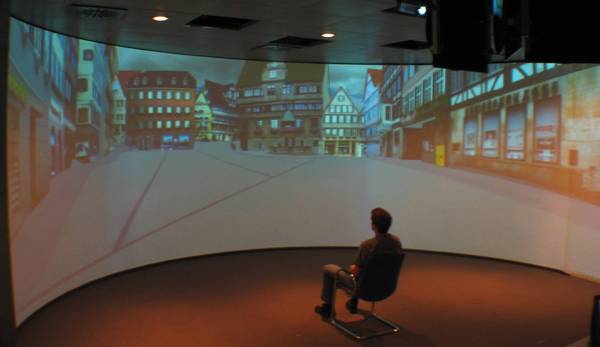Encoding of Spatial Information
We are interested in how people mentally encode spatial information for wayfinding. In one of our route-following studies, subjects either got a map or a verbal route direction for a given route, had to memorize this, and then to follow the route. It turns out that subjects memorize the route as a sequence of propositional instructions. They performed better for simple routes using the verbal directions; for more complex routes being able to recall a mental image of the map was beneficial. In another study employing a secondary task setting, subjects were distracted with either a verbal, a spatial, or a visual secondary task during the learning phase and then had to find their way in a virtual environment (see the image). This study supports the interpretation of the first study: environmental information for wayfinding seems to be stored in a propositional format employing abstract spatial knowledge rather than a visual image.

The VR-study has been done in collaboration with the MPI Tübingen.
Main Publications:
Meilinger, T., Knauff, M., and Bülthoff, H. H. (2006). Working memory in wayfinding - a dual task experiment in a virtual city. Proceedings of the 28th Annual Conference of the Cognitive Science Society 2006.
Meilinger, T. (2005). Wayfinding with Maps and Verbal Directions. In Proceedings of Twenty-Seventh Annual Conference of the Cognitive Science Society.
Meilinger, T., and Knauff, M. (2004). Nach dem Weg fragen oder Karte studieren, was ist besser? Ein Feldexperiment. In D. Kerzel, V. Franz, and K. Gegenfurtner (Eds.), Beiträge zur 46. Tagung experimentell arbeitender Psychologen. Pabst Science Publishers, Lengerich.




